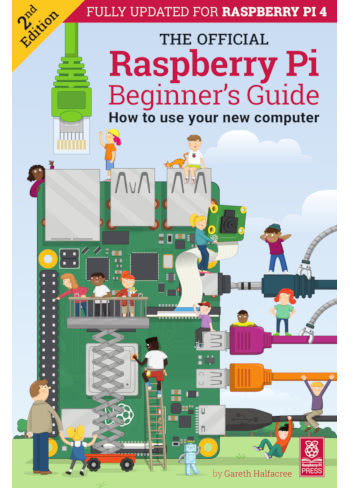
The new Beginner’s Guide has enjoyed a complete overhaul. Brian Jepson, the new head of publishing at Raspberry Pi Press, has introduced a new production approach which has resulted in a book that’s sleeker, cleaner, and more accessible than ever before – and at a beefy 278 pages, it’s also the longest edition yet.
That extra length comes courtesy of the inclusion of a bonus chapter on the Raspberry Pi Pico and Pico W microcontrollers, which serve as excellent companions to the main Raspberry Pi single-board computers. There’s also a fully updated getting started guide for setting up the Raspberry Pi 5, as well as the Raspberry Pi 400 and Raspberry Pi Zero 2 W.
This is my first time working with Brian, and it’s been a blast – from getting to grips with a whole new and considerably sleeker production process, which will mean easier updates in the future, to going through the material with a fine-tooth comb to make the book the best it could possibly be. Thanks too go to everyone else involved in the process: editor Liz Upton, interior designer Sara Parodi, Nellie McKesson in production, Brian O’Halloran for new photography, graphics editor Natalie Turner, head of design Jack Willis, and of course returning illustrator Sam Alder, plus all the others at Raspberry Pi Press.
The publication of the 5th Edition in English won’t be alone on the shelves for long, either, with Brian having confirmed translations into more languages than ever before: Danish, French, German, Greek, Italian, Polish, Japanese, Norwegian, Portuguese, Spanish, and Swedish.
The Official Raspberry Pi Beginner’s Guide, 5th Edition is available in all good bookstores now, in Raspberry Pi Stores and authorised resellers, and online with global delivery from the Raspberry Pi Press store; a digital copy will also appear, free of charge, in the Raspberry Pi Bookshelf app on Raspberry Pi OS in the next few days.
I hope you have as much fun reading it as I did writing it.



